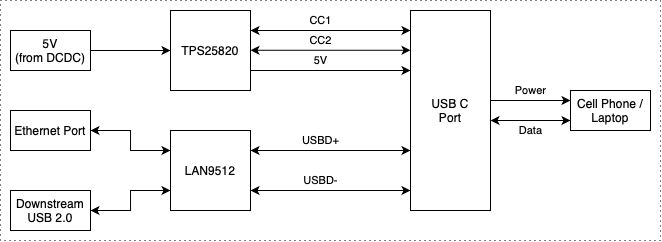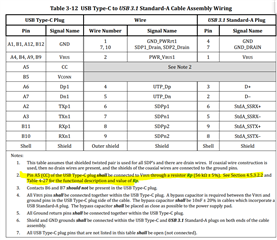Other Parts Discussed in Thread: TPS25751
Tool/software:
I'm trying to get the TPS25820 to work as a USB Hub PD controller. I want to supply 1.5A output current to charge the attached cell phone, while allowing the cell phone to access the LAN9512 USB hub.
As far as I can tell this means the TPS25820 is an upstream facing port (upstream / master being the cell phone). But given it is meant to be supplying power not receiving power, also somewhat is acting as a 'downstream facing port' in the sense of power?

With the prototype PCB if we connect to the USB port with a USB A to C cable (no CC pins) the LAN9512 and downstream ports can be detected - but of course no charging. If we connect with a C to C cable, charging is negotiated however the LAN9512 does not appear as a device.
I've tried enabling and disabling the EN and CHG pins but the LAN9512 is not detected - I suppose because the CC pins are being controlled by the TPS25820 still as if it were an upstream port when I need it to act as a downstream port for the data to work.
Is there any way to modify this circuit (do we need any pull up / down resistors on any lines?)
Is the functionality I'm looking for 'Dual Role Port' controller?



